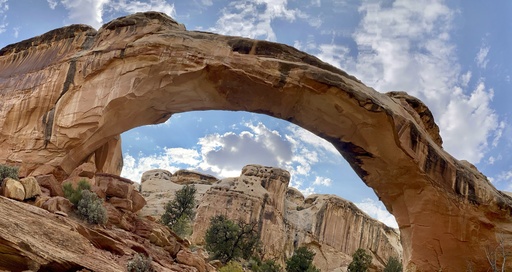
A week after the collapse of the “Toilet Bowl” rock arch at Lake Powell in Utah’s Arches National Park, concerns have arisen regarding the stability of other arches in the park. Spokesperson Karen Garthwait stated that while the arches may be at risk of falling, there are no preventive measures being taken to avoid their collapse. The primary goal of the National Park Service is to preserve the natural processes that create these structures, despite the fact that these same processes may eventually cause their undoing.
The recent crumbling of the “Double Arch” at Glen Canyon National Recreation Area has highlighted the reality that all arches have a limited lifespan, one that experts are trying to neither shorten nor extend. Accelerated erosion due to human activity over the last century has made arches more vulnerable to collapse at any given time, although predicting exactly when this might happen remains difficult.
The appearance of an arch does not necessarily indicate its stability, as some arches with external cracks may be more solid than those that appear sturdy. Southern Utah’s sandstone bedrock, although strong enough to support large arches, is also susceptible to sculpting by natural elements such as wind, water, and gravity due to its softness. The semi-arid climate of the region plays a crucial role in both the formation and maintenance of these sandstone wonders.
Although the National Park Service does not actively fortify arches, strict policies have been put in place to restrict human impact on these natural structures. Past actions, such as people walking on or hanging from arches for photos, have led to the enforcement of regulations against such activities since 2006. The recent collapse of the “Toilet Bowl” arch at Lake Powell has been attributed to a combination of regular foot traffic and fluctuating water levels due to drought and climate change impacts.
Geology and geophysics professor Jeff Moore from the University of Utah emphasizes that arches are fragile, and even subtle changes can lead to significant consequences. Human-made activities like vibrations from trains, trucks, and helicopters have been identified as factors that stress arches and accelerate crack growth. The Federal Aviation Administration has implemented air restrictions near Utah’s Rainbow Bridge National Monument to prevent vibration damage following Moore’s research.
Moore warns that the rapid changes in the lifespan of arches due to human activity could result in more collapses in the future. He notes that the vibration landscape has drastically altered in recent years, potentially leading to further arch failures. Additionally, a facility in western Colorado linked to earthquakes near Utah national parks was temporarily closed in 2019 after a 4.5 magnitude quake was recorded, but has since resumed operations at a reduced rate.
Richard Beckman, president of the Natural Arch and Bridge Society, highlights the urgency to visit iconic arches before they potentially collapse. He describes the loss of arches as akin to losing old friends and emphasizes the importance of appreciating these natural wonders while they still exist.
